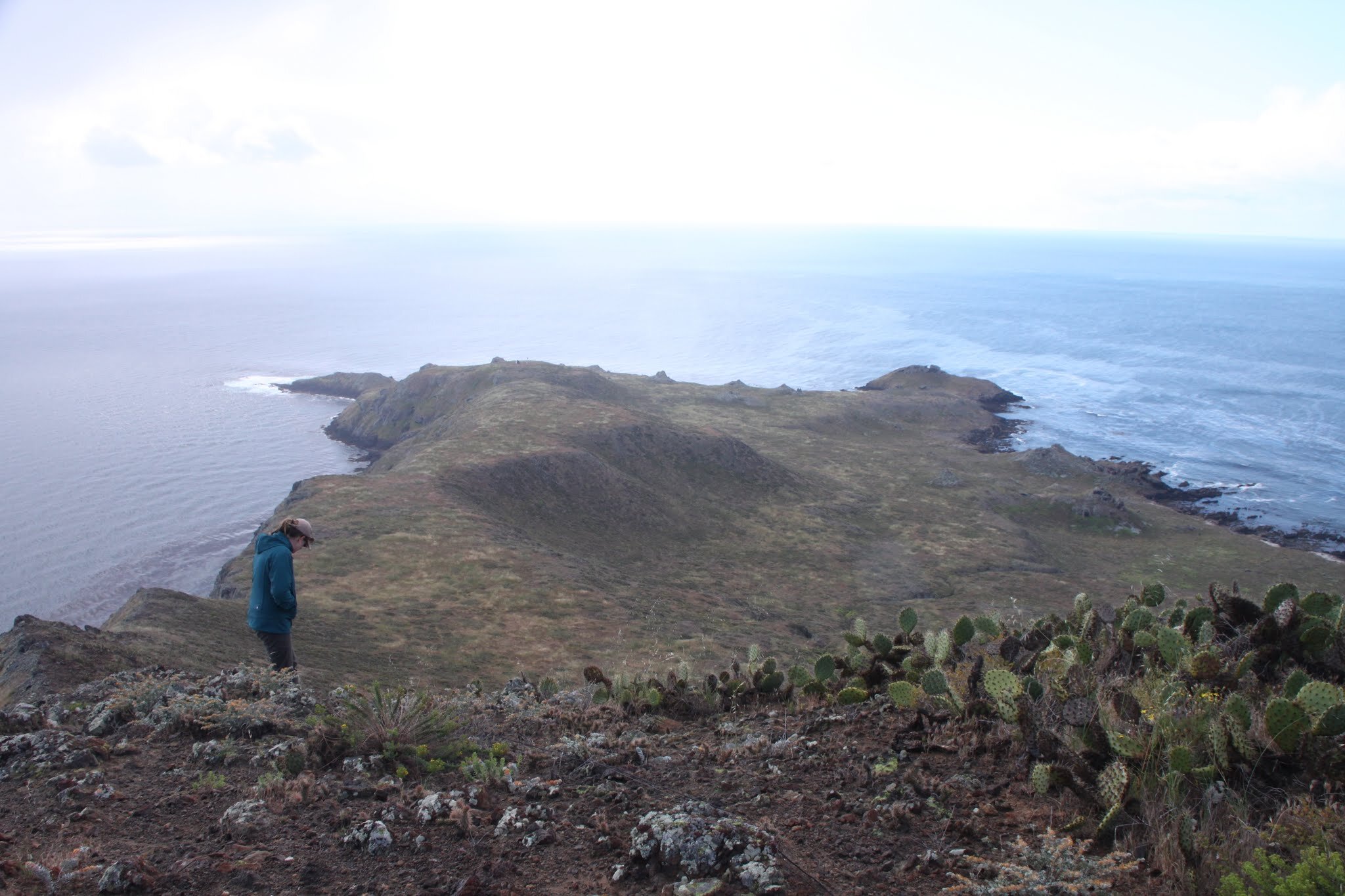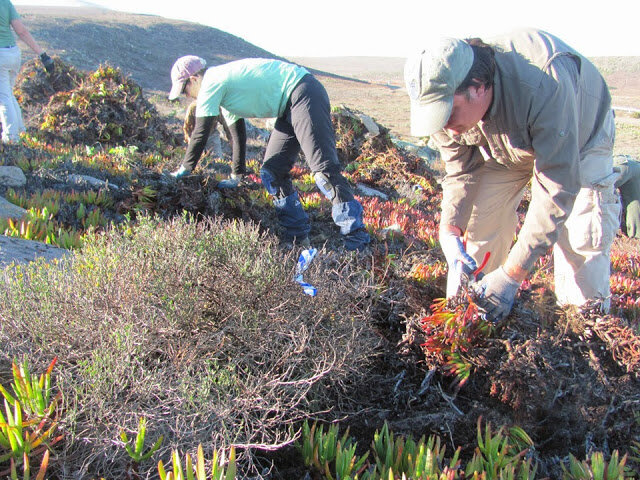

San Clemente Island
San Clemente Island
About San Clemente Island
San Clemente Island is the southernmost of the Channel Islands of California. It is owned and operated by the United States Navy, and is a part of Los Angeles County. it is roughly 21 miles long and contains 57 sq mi of land.
San Clemente Island is mostly composed of volcanic rock. It has some incredible marine terraces and continues a number of canyons, streams, waterfalls and pools of fresh water on its surface.
The island is parallel to the major faults of the California mainland and is often described as a tilted piece of land rising out of the ocean, a dramatic example of the earth’s crust with steeper northern side and a more gently sloping southern side.
The island was named for Saint Clement, an apostle who was martyred in Rome in the year 99. The Spanish named it San Clemete in honor of Saint Clement when they discovered it in 1542. The name San Clemente was used officially from 1852 until 1935, when it was shortened to simply San Clemente Island, which is still used today.
San Clemente has been inhabited since at least 1831 when the first settlers arrived from Mexico and established farms on the island. In 1933, President Franklin Delano Roosevelt set aside San Clemente Island as one of five refuges for migratory birds under the Migratory Bird Treaty Act of 1918. The refuge is currently managed by the US Fish & Wildlife Service.
Climate Of San Clemente Island
San Clemente Island experiences warmer and drier summers followed by falls and winters that are of average temperature, mostly keeping around 70 degrees Fahrenheit.
Major faults run parallel through San Clemente Island
A view from the top of San Clemente that showcases it’s “tilted” appearance
A view of the ocean on San Clemente Island looking west on a sunny day.
About Our Restoration Work On San Clemente Island
Channel Islands Restoration has been working with the U.S. Navy to eradicate ice plant on San Clemente Island since the early 2000s. We’ve been extremely gratified by the results of our work on San Clemente. Working with both the Navy and San Diego State University’s Soil Ecology and Restoration Group (SERG), volunteers and staff from CIR have traveled numerous times to San Clemente Island to continue hand-removal of several pernicious non-native plants.
CIR has not only removed ice plant from approximately 55 acres of sensitive habitat, but also removed fennel (foeniculum vulgare) ) from several remote cactus-covered canyons and watershed areas. The fennel removal is a particularly tricky but exciting aspect of our work on San Clemente.
Restoration Results From San Clemente Island
Channel Islands Restoration is extremely gratified by the results of work begun three years ago on San Clemente Island. Working with both the Navy and San Diego State University’s Soil Ecology and Restoration Group (SERG), volunteers and staff from CIR traveled three times since October 2012 to San Clemente Island to continue hand-removal of several pernicious non-native plants. CIR not only removed ice plant from approximately 55 acres of sensitive habitat, but also removed fennel (Foeniculum vulgare) from several remote cactus-covered canyons and watershed areas. The fennel removal is a particularly tricky but exciting aspect of our work on San Clemente. CIR staff used ropes and specialized climbing gear to rappel down cliffs into canyons that were as much as 100 feet deep. The plants were located, then eradicated, and any seeds were bagged and removed from the canyons.
Volunteers also worked with SERG staff to locate fennel plants in more accessible areas, where staff removed them.
With the removal of these non-native plants has come a wonderful re-emergence of multiple island endemic and endangered plant species, those previously crowded out by the exotics. With ice plant on its way out, we now see native species such as boxthorn (Lycium sp) beginning to thrive. Boxthorn is an example of an important native plant on San Clemente, as it provides a primary nesting habitat and cover for several threatened and vulnerable fauna including the San Clemente Island sage sparrow (Amphispiza belli clementeae) and the island night lizard (Xantusia riversiana reticulata). Additional endemic plant species have sprouted where the ice plant was removed, including San Clemente Island lotus (Acmispon dendroideus var. traskiae), Cryptantha traskiae (a threatened plant in the Borage family), and the San Clemente Island evening primrose (Camissoniopsis guadalupensis ssp. clementina.
About Our Trips To San Clemente Island
Volunteers first travel to San Diego (most staying the first evening at the same motel) before departing for the island by plane from the North Island Naval Air Station on Coronado Island. The Navy contracts with a civilian airline to transport personnel to the island, so the flights are no charge for volunteers. Once on the island, the group checks in at one of the base guest housing complexes, reminiscent of a Motel 6. Low-cost meals are provided at the base commissary, and the evening isn’t complete without a visit to “The Salty Crab” for drinks, pool, and swapping stories of life on the island.
The Navy has been so impressed with CIR’s work, particularly in helping to remove invasive non-native plants in areas difficult to access, that they have invited CIR to play an even larger role in native plant and habitat restoration on San Clemente Island in 2014. CIR will hold an ice plant removal trip to the island at the end of November 2013, and more volunteer trips are planned for the coming years.
These kinds of trips are very rare, so San Clemente Island remains a very sought after volunteer opportunity. Experienced volunteers have been given priority on the trips that we have held so far. With our increasing role in the restoration program in 2014, we hope that more opportunities to volunteer on this remote Navy island will be offered to all CIR volunteers.
CIR staff member Kevin Thompson remove fennel from remote canyons on San Clemente Island.
Channel Islands Restoration removes ice plant on San Clemente Island
Working with The Navy and SDSU On San Clemente Island
Channel Islands Restoration volunteers and staff have worked on San Clemente Island in cooperation with the Navy and San Diego State University. We hand-removed non-native iceplant that was surrounding the San Clemente Island lotus (Acmispon dendroideus var. traskiae) a federally listed endangered species.
We also removed patches of iceplant from about 50 acres of sensitive habitat of the endemic Island sage sparrow. The iceplant crowds out native plants, including species of boxthorn (Lycium sp.) that the sparrows nest in. CIR volunteers kept up a rigorous and steady pace in order to accomplish such a large scale iceplant removal. Many species of native plants sprouted where the iceplant had been removed, including
The logistics of such trips are almost as daunting as eradicating the iceplant, but the results were well worth the effort. CIR donated most of our staff time for the trips, and volunteers paid for their own housing and meals. San Clemente Island is an important base for the Navy, and several hundred duty personnel and civilian workers are regularly posted to the island.
The island provides an important auxiliary landing field for the Navy, and it is used extensively for training. Navy Seals train on San Clemente, and the southern part of the island is used for air bombardment and ship board gunnery practice.
San Clemente has 14 plants that are unique to the island, plus several species of endemic animals. The Navy funds a large restoration program for many of these species. The primary restoration staff are from the Soil Ecology & Restoration Group at San Diego State University.
The groups of volunteers first traveled to San Diego (most staying the first evening at the same motel) before departing for the island by plane from the North Island Naval Air Station on Coronado Island. The Navy contracts with a civilian airline to transport personnel to the island, so the flights were free for the volunteers. Once on the island, the group checked in at one of the base guest housing complexes, which is reminiscent of a Motel 6.
Low-cost meals were provided at the base commissary. CIR volunteers then traveled by van to the western side of the island to begin work. Every volunteer worked hard hand-pulling the ice plant and placing it in large piles. This technique was quite successful at eradicating ice plant with only minimal re-sprouting. The restoration site is 55 acres in size, and the volunteers cleared most of it.
At lunch time, island personnel took the volunteers to interesting view spots and even lead the group on a hike featuring endemic plants! We are very proud of our volunteer trips to the San Clemente Island, and we hope to follow up with more trips, perhaps starting this spring.
CIR is also working with the Navy on San Nicolas Island, and we are glad to be working on both of these islands that are not normally accessible to the general public.
Invasive Plant Removal On San Clemente Island
CIR staff used ropes and specialized climbing gear to rappel down cliffs into canyons that were as much as 100 feet deep. The plants were located, then eradicated, and any seeds were bagged and removed from the canyons. Volunteers also worked with SERG staff to locate fennel plants in more accessible areas, where staff removed them.
With the removal of these non-native plants has come a wonderful re-emergence of multiple island endemic and endangered plant species, those previously crowded out by the exotics. With ice plant on its way out, we now see native species such as boxthorn beginning to thrive.
Boxthorn is an example of an important native plant on San Clemente, as it provides a primary nesting habitat and cover for several threatened and vulnerable fauna including the San Clemente Island sage sparrow (Amphispiza belli clementeae) and the island night lizard (Xantusia riversiana reticulata). Additional endemic plant species have sprouted where the ice plant was removed, including San Clemente Island lotus (Acmispon dendroideus var. traskiae), Cryptantha traskiae (a threatened plant in the Borage family), and the San Clemente Island evening primrose (Camissoniopsis guadalupensis ssp. clementina).
San Clemente Island is an important Naval base with several hundred duty personnel and civilian workers regularly posted to the island. The island provides an important auxiliary landing field for the Navy which is used extensively for training. Navy Seals train on San Clemente, and the southern part of the island is used for ship board gunnery practice.
San Clemente has 14 plants unique to the island, plus several species of endemic animals. CIR arranges habitat restoration work trips for volunteers and staff of CIR. Funding for this kind of habitat restoration is limited, so CIR donates much of the staff time for the trips. SERG also reimburses CIR from some of our staff costs, and volunteers pay for their own housing and meals.
CIR staff and volunteers remove ice plant from around the San Clemente Island lotus
San Clemente Island evening primrose sprouting where ice plant was removed.







